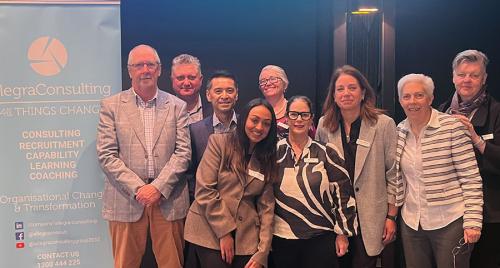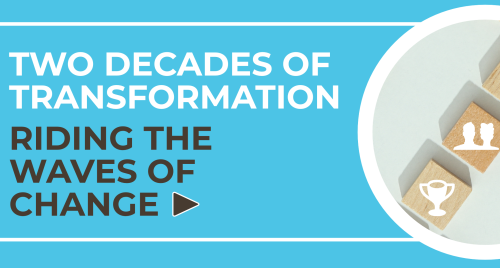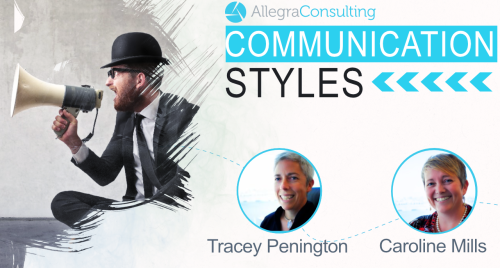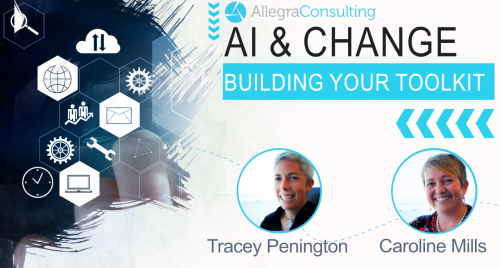
What type of leadership is needed as organisations try to ready themselves to face the continued pace of change in their industries and in the broader market? I get a lot of people contacting me about this, and certainly, organisations are realising that they need to be more responsive, adaptive or agile, which requires a new way of leading. At Allegra Consulting we call this Adaptive Leadership.
Organisations are attempting rapid and, at times, radical changes. With many moving from older hierarchical structures to more agile ones, such as the journey of organisations like ANZ, which has explicitly stated a commitment to adopt agile principles, organisations are changing their operating model to make this happen.
This change often results in a need to adopt a change in mindset, behaviours and often capabilities, particularly around how leaders lead.
I have always banged a drum to anyone who would listen, about our need to see change management as no longer simply a discipline firmly linked to projects (yes, that is still needed) but to also look to achieve what we practitioners call an organisational change approach or building organisational change capability into leaders and employees.
We at Allegra don’t believe agile is right for every organisation and every function in an organisation. It is certainly a great framework/mindset/methodology if you are looking to create rapid change in your organisation, however, it can be short-sighted to jump on the agile train without thinking strategically about what you are trying to achieve.
Putting that aside, I do think that to lead organisations through business today and into the future, new ways of leading are needed and our employees are looking to them for what we call adaptive leadership. At the heart of this is an ability to flex your approach to what is needed at the time, in the moment and as you deliver performance over a period of time.
In addition to the change required to meet the more adaptive nature of our world and marketplace we still have a problem with significant sick leave due to stress across Australia – costing the economy over a billion dollars in lost productivity each year. I hear from clients, industries and organisations, the adage that people “join organisations and leave leaders” which I learnt as a young HR practitioner and it still holds true in so many cases.
So, what does good leadership look like in the future?
For me, it’s delivered via three lenses – Me, We and Us.
“Me” is about understanding myself, my emotions, my wellbeing, my resilience and my behaviours. As always in leadership, I need to be a leader of myself first before being a leader of others. It’s understanding the mindset and behaviours that I need to have to lead myself and my team now and into the future.
“We” is about my leadership of teams – being human-centred in my approach, leading with empathy, empowerment, understand how our brains work and having and building a culture of curiosity and innovation.
Lastly, it’s about "us" - creating a picture of the future as a broader organisation. Leaders need to work to create shared clarity, be sponsors for change, and create as clear as possible a vision of the future operating model of the organisation.
Figure 1 below outlines a program we deliver to clients covering some of these core components.
So, what do you do to look to build these capabilities yourself? Some quick tips from me:
- Self-awareness – start to note down how you feel, what triggers strong emotions in yourself, how you manage those feelings and be the best possible version of yourself.
- Build empathy – there cannot be enough said about building empathy. Harvard Business Review and other leading thought organisations have done oodles of research showing how empathy is a key capability we all need to have as we move into the future. Building empathy can be as easy as talking to someone from a different background to you and listening to their experiences, getting feedback from your team about how they find your leadership.
- Building Curiosity into your approach as a leader – encourage your team to look for new ways to do the work they do – set them challenges to research what others do and find ways to improve the services on offer. Get team members to share different things that sparked their curiosity outside work during the week.
Give me a call or drop me an email at caroline.mills@allegraconsulting.com.au or reach out on LinkedIn if you want to chat more about this.
Caro
Figure 1: Change Adaptive Leader Framework









